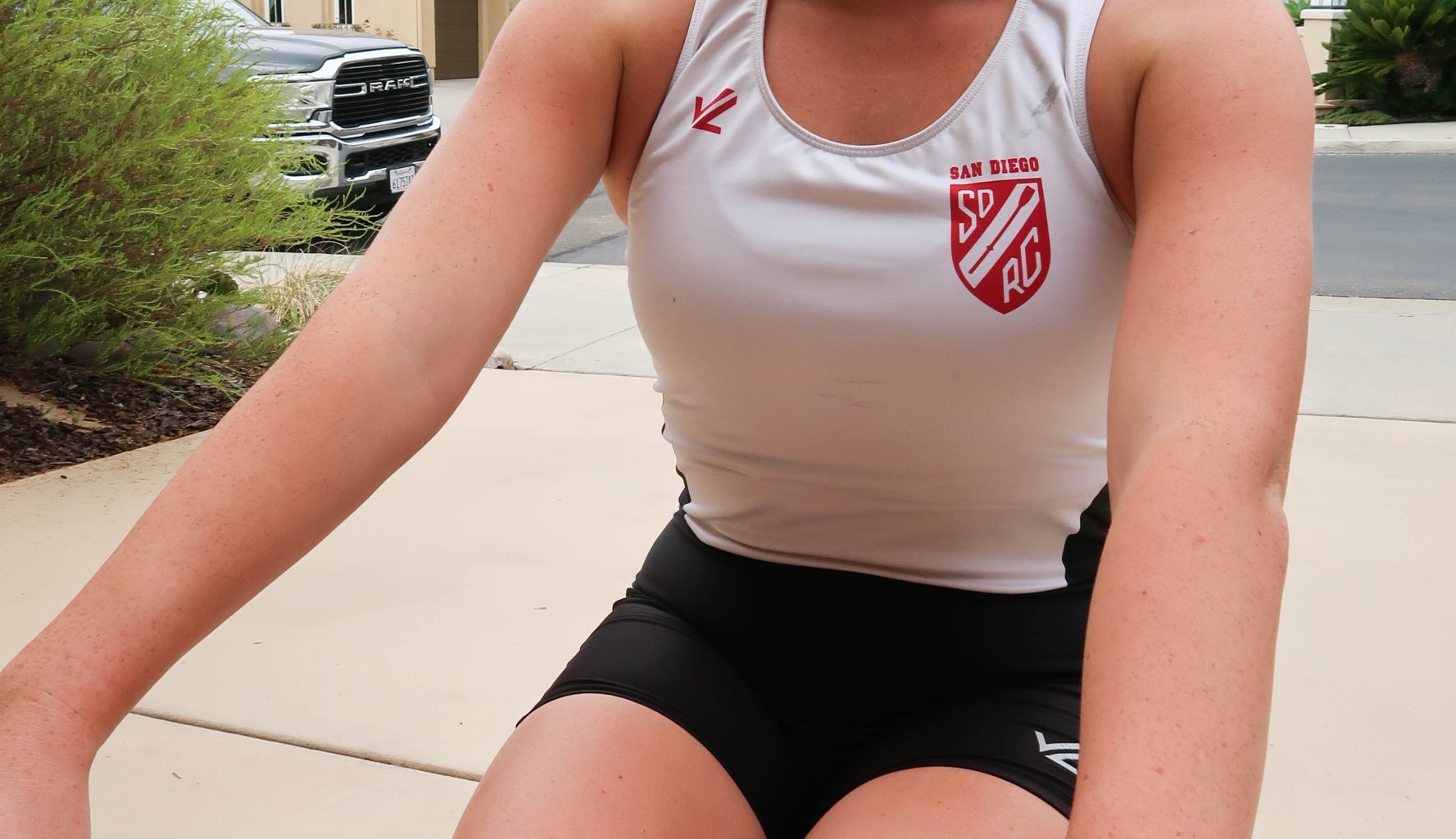LA JOLLA – Looking back at the distance you’ve already covered — that’s what Gabby Bigler does as she and sculls partner Kate Rasmussen row 2,000 meters toward the finish line, facing backwards.
But it’s also a metaphor for the long way the sturdy oarswoman has already come in her young life. She rows by faith, not by sight.
“I’m focused on my breathing and staying relaxed,” says the rising high school junior of her rowing position. “I’m aware of my breathing and my technique — the position of the blades (on her oars).”
Rasmussen, behind her, is facing her backside in the bow seat of the two-person scull. They both have two oars. Rasmussen is looking over her shoulder to keep an eye on the floating buoys and keep the boat in their lane. She steers while she pulls.
The two powered their scull over the waters fast enough to win gold at the U.S. Rowing Youth National Championships in the PR3 Inclusive. Bigler says conditions were rough in Sarasota, Florida: “Everything is hot. You’re sweaty. Your hands are sweaty on the (oar) handles.”
The PR3 Inclusive race pairs an athlete with a visual or physical impairment with an able-bodied athlete. Bigler was born with aniridia, a rare eye condition that limits how much detail she can detect. But she functions at a high level in the classroom by sitting in the front and taking photos of the whiteboard in AP math with her phone, then enlarging the image to read the details.
When a photographer visited to take photos of Bigler on her “erg,” or ergometer, a rowing machine that sits on the ground, she put her face close to her tablet to call up the file with her erg workout on it.
The sun-drenched rower, sporting her San Diego Rowing Club uniform, chuckled. “I have a lot of pictures on my phone of the board.” That’s her tool and her constant companion, along with her Chromebook, to unleash her superpowers to take AP world history and AP art history last spring to finish her sophomore year.
Then, this fall, she’ll tackle AP English and AP U.S. history, as well as physics and pop culture for a full load in a sped-up academic program.
Bigler also rows with Rasmussen, her sculls partner, on the eight-person able-bodied boat. The technique is different on that vessel: Instead of each rower sculling with two oars each, in the eight, each athlete sweeps with a single oar extending into the water to the right or left.
“The scull requires much more awareness,” Bigler says. “In the smaller boat, you have to make sure the boat doesn’t lean.” There is no coxswain, as in the larger boat, to call out cadences or to keep an eye out for the others lane-wise.
The high school athlete’s dream is to go on to make the national team and participate in the 2028 Paralympics in Los Angeles, alongside the Olympics.
